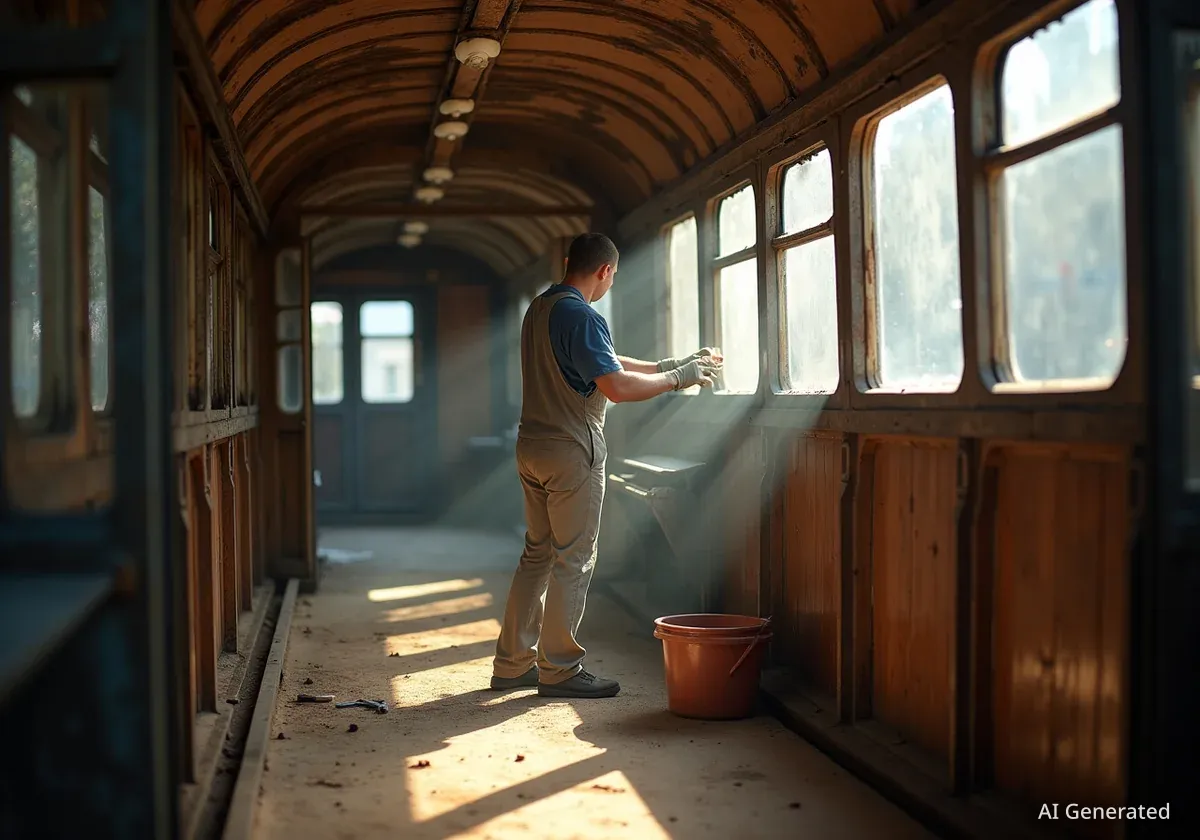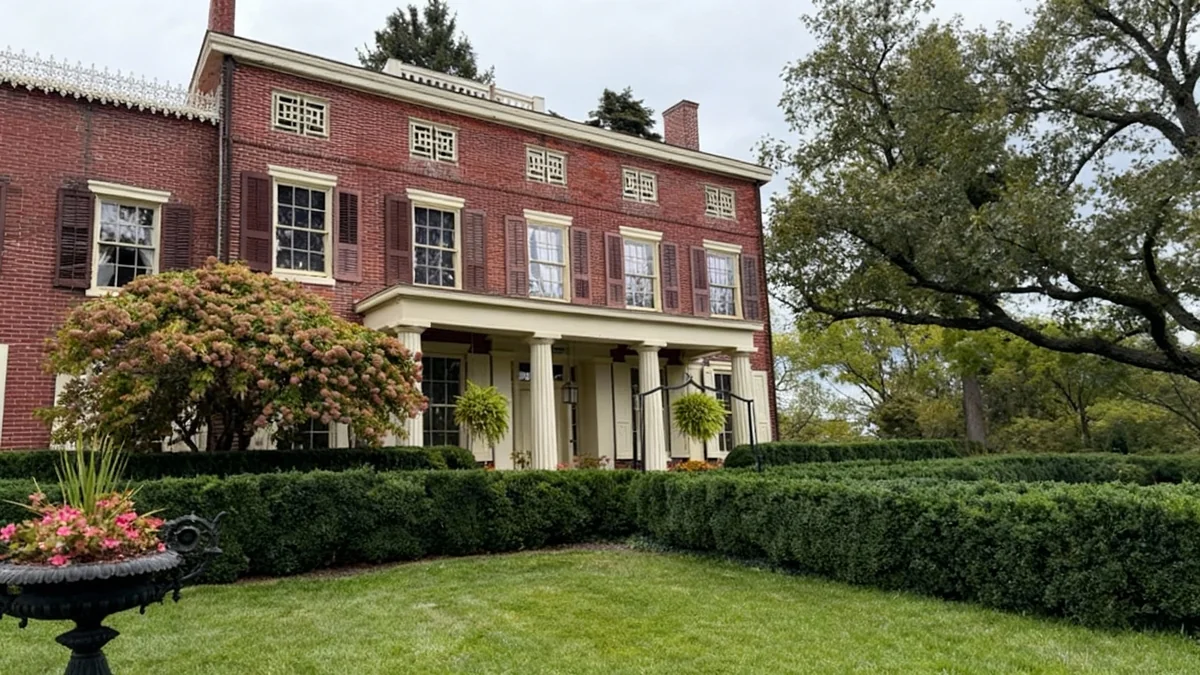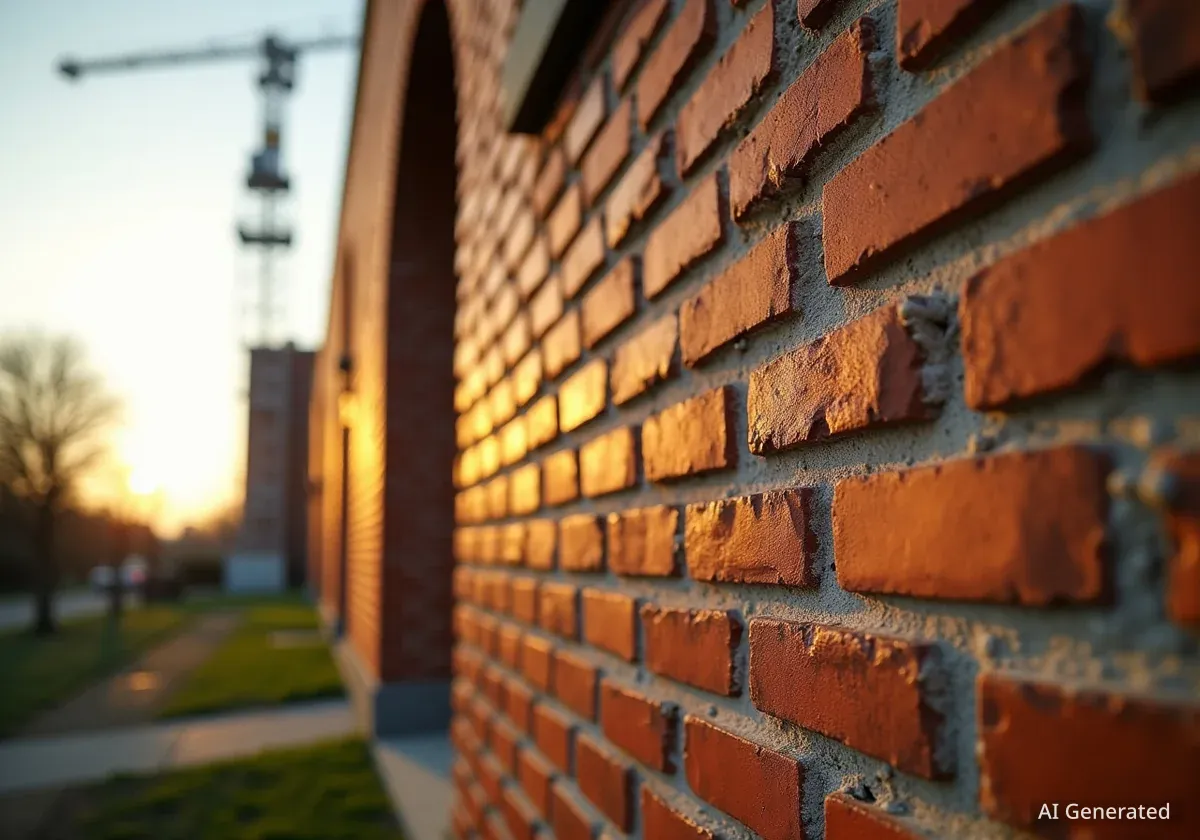Volunteers at the Rochester & Genesee Valley Railroad Museum are working to restore a piece of local history, a 108-year-old subway car known as Car 60. The project recently received a financial boost from a community grant, moving the team closer to its goal of returning the historic vehicle to operational service for the first time in nearly 70 years.
Key Takeaways
- Car 60, a rail car from Rochester's former subway system, is undergoing a major restoration.
- The project is led by volunteers at the Rochester & Genesee Valley Railroad Museum.
- A recent grant from the Rochester Area Community Foundation is helping to fund the effort.
- The total estimated cost for the restoration is approximately $100,000.
- The ultimate goal is to make Car 60 capable of carrying passengers once again.
A Link to Rochester's Transportation Past
Car 60 is more than just an old rail car; it is a direct link to a forgotten era of public transit in Rochester, New York. The vehicle served the city's subway system until passenger service was discontinued in 1956. For decades, the subway was a vital artery, connecting suburban residents with jobs and shopping in the downtown core.
"You talk to people who rode the subway, it was a part of their lives," said Otto Vondrak, a volunteer with the museum. "The Rochester subway brought in people from the suburbs, brought them to work downtown, brought them to shopping, brought them to jobs."
Built in 1916 in Ohio, Car 60 initially operated in Utica before being transferred to Rochester in the 1930s. It remained in service until the very end of the subway's passenger operations. Since 1998, it has been housed in the museum's restoration shop, awaiting its revival.
The End of the Subway Era
The decision to close the Rochester subway was finalized in the mid-1950s. A 1974 report co-authored by the City Historian at the time, Joseph W. Barnes, noted that on September 11, 1954, the City Council decided to end passenger service. The primary reasons cited were the unprofitability of the service and the pressing need to build a highway connector, part of which would use the subway's right-of-way.
The Intricate Work of Restoration
Bringing a vehicle over a century old back to life is a significant undertaking. Years of exposure to weather and general degradation have taken their toll. The restoration involves extensive structural work, much of which is being handled by a new generation of volunteers.
Kyle Loveland, a 24-year-old volunteer welder, is one of the key figures in the hands-on restoration. He described the immense effort required to address the car's condition.
"A lot of stuff was replaced. A lot of structural things had to be rebuilt just because they degraded over the years -- a lot of rust and weather damaging things."
The team's objective is not merely cosmetic. "That's the idea," Loveland confirmed when asked if the goal was to make the car fully functional again. The process is complicated by the passage of time, as original blueprints and technical knowledge have become scarce.
"How much of the blueprint for doing something like this is lost in time?" Loveland was asked. "A fair bit of it," he replied. The team relies heavily on the institutional knowledge of long-time members and historical records.
Car 60 Timeline
- 1916: Built in Ohio.
- 1930s: Transferred from Utica to Rochester for subway service.
- 1956: Rochester subway passenger service ends.
- 1998: Acquired by the Rochester & Genesee Valley Railroad Museum.
- Current: Undergoing restoration with an estimated cost of $100,000.
Funding the Future
The restoration of Car 60 is a costly project, with a total estimated budget of around $100,000. While passion and volunteer hours are plentiful, financial resources are crucial. A recently awarded grant from the Rochester Area Community Foundation has provided a significant boost to the project, specifically funding the restoration of the subway car's rear section.
According to Vondrak, while the grant is a major step forward and a source of hope for the volunteers, substantial fundraising is still required to see the project through to completion. The museum continues to seek donations to cover the remaining costs and ensure this piece of history can be preserved.
A Multi-Generational Effort
The work on Car 60 spans multiple generations, connecting people who remember the subway with those who have only read about it. Vondrak highlighted this unique dynamic.
"I'd say like three generations of people have worked on this. First, people who had memories of the car working. Second, were people who knew those memories. And third, a whole new generation coming in."
This passing of knowledge is essential for the project's success. Younger volunteers like Loveland learn from older members who possess invaluable, often unwritten, information about how these historic vehicles were originally built and maintained.
Nearly 70 years after its last passenger run, the responsibility for Car 60's future now rests with this new generation. Their work ensures that the story of the Rochester subway is not just read in books but experienced firsthand.
The museum's mission extends beyond the mechanical work. "Telling those stories is really what our museum is all about," Vondrak emphasized. By restoring Car 60, they are not just saving a machine; they are preserving the memories and the community heritage it represents, with the hope that it will one day carry passengers again along the museum's tracks.





